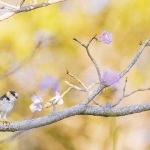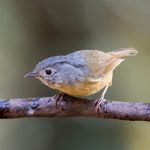A greenbelt, as a product of land use policy, is a magnificent thing (as a fashion accessory, usually not so much.) Greenbelts are undeveloped swathes of land, usually within urban areas, designated to stay wild, partially wild, or agricultural. Zones like these add a great deal to the cities enlightened enough to protect them. Greenbelts help to regulate air quality, reduce soil erosion, protect waterways from polluted runoff, recharge groundwater supplies, and lower energy consumption and summer air temperatures by mitigating the urban heat island effect. Not only do greenspaces deliver the passive economic benefits of improved property value, worker productivity, and consumer interest in local businesses, but they also provide venues for active forms of recreation including hiking, biking, and, of course, birding. Long, continuous stretches of woods and water also offer a cornucopia of physical, mental, and emotional health benefits. They protect critical habitat from destruction, animals from accidents, and cities from sprawl. What’s not to love?
Another greenbelt you’re sure to love is The Greenbelt. The Ridger is a linguist, progressive, and self-described Freethinker. She’s also a naturalist, with birds and astronomy among the topics she blogs about frequently. Enjoy science and serendipity, words and pictures in her presentation of I and the Bird #44.
You know what else provides scads of psychological and societal benefits while protecting biodiversity, human rights, economic justice, and the fiscal wellbeing of various technology companies? That’s right… blogging. If you’ve been doing your part by blogging about wild birds or birding, join the club. I and the Bird is the blog carnival for you. So send a link to your best recent work to me or our next wonderful host, Jayne (blessingsabound AT mac dot com) of Journey Through Grace. I and the Bird #45 drops on Thursday, March 22, so get your contributions in by March 20.











Leave a Comment